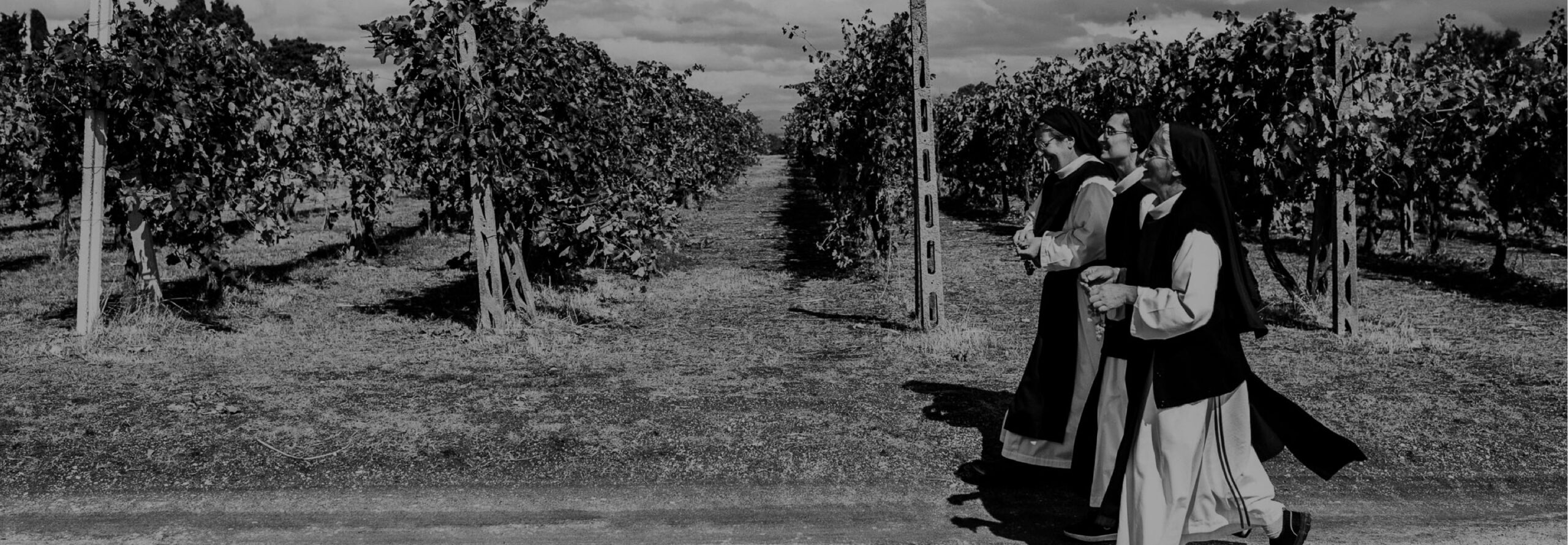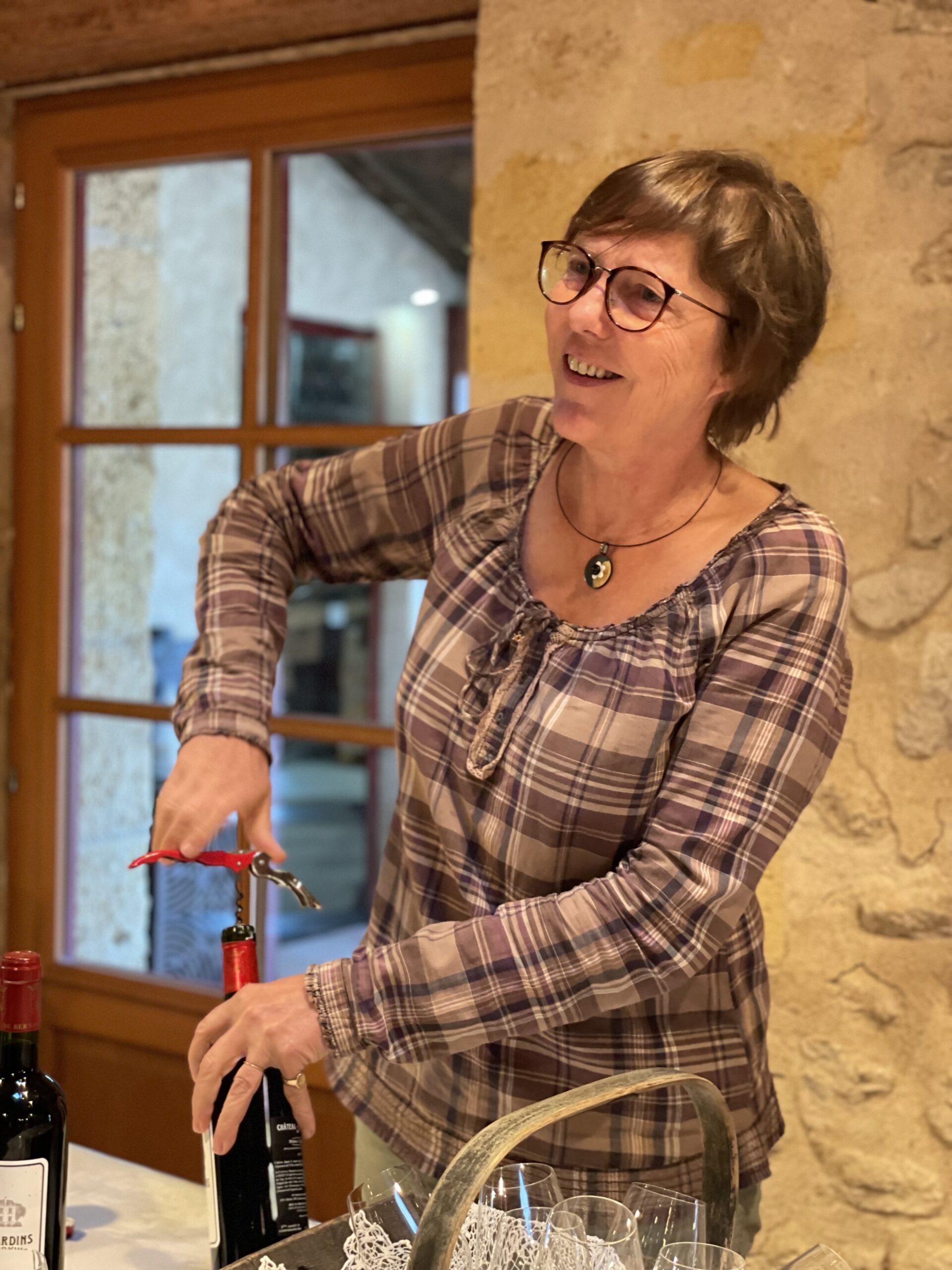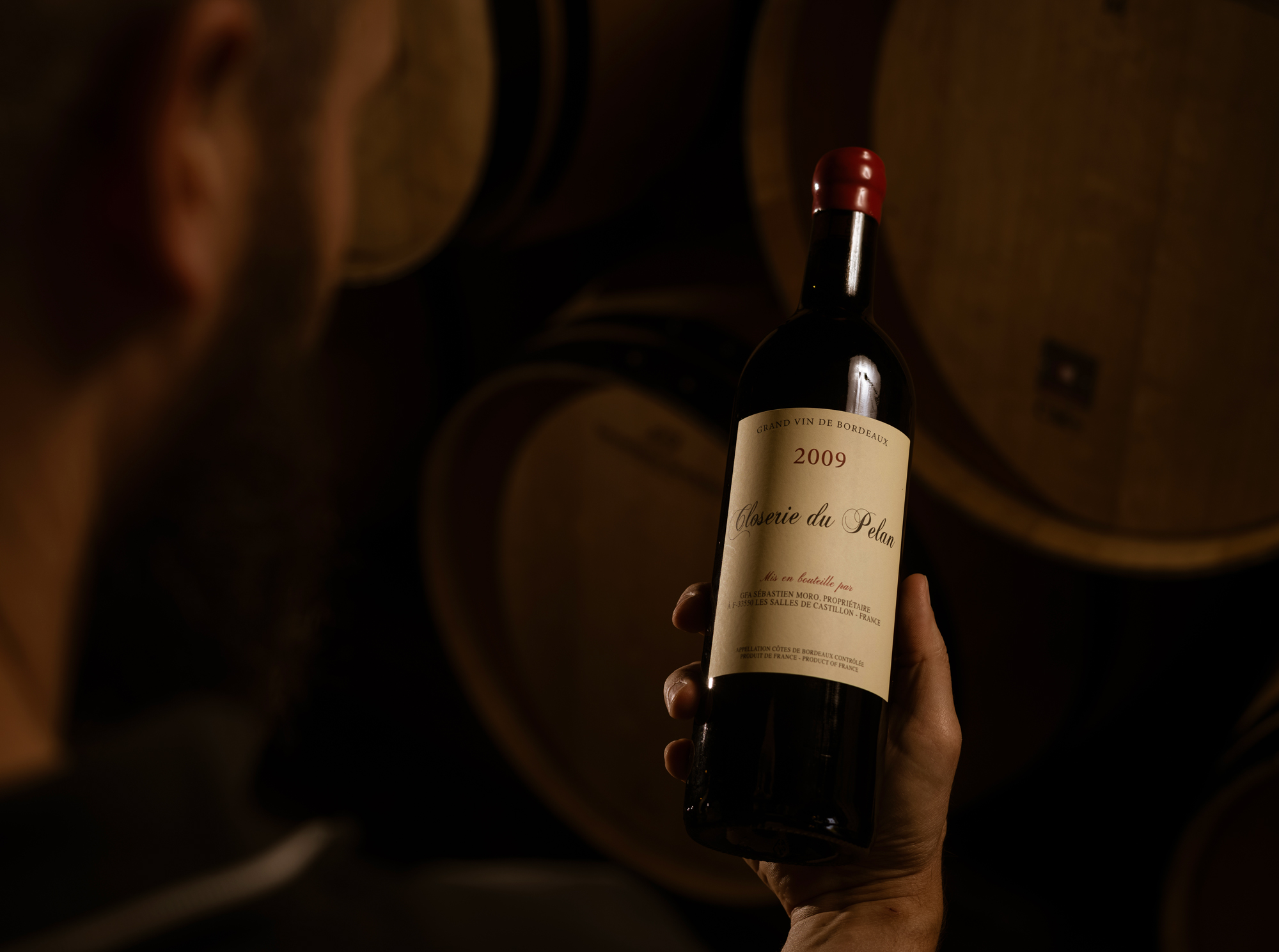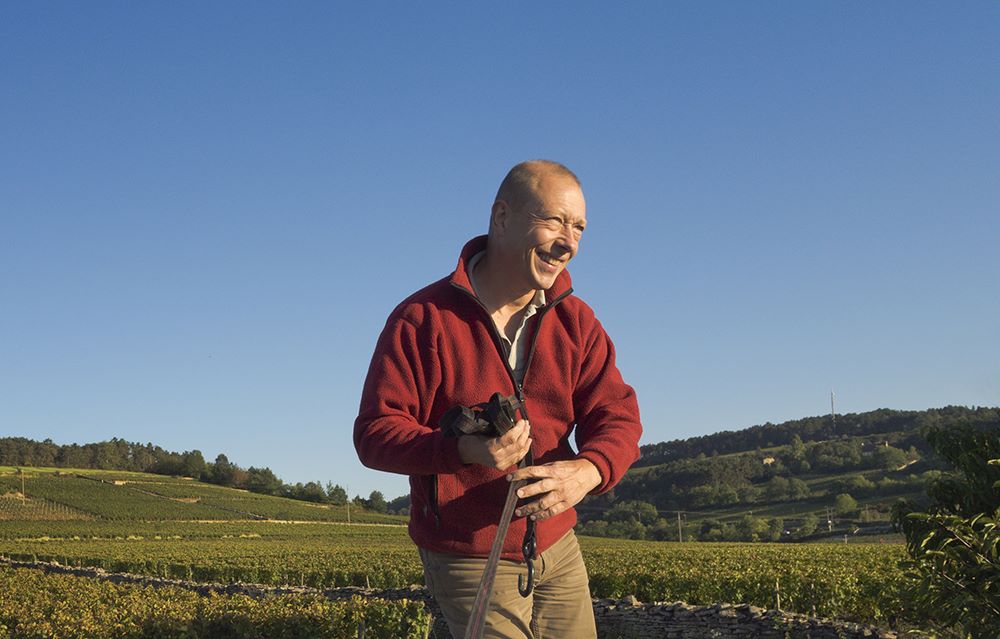Domaine Levet
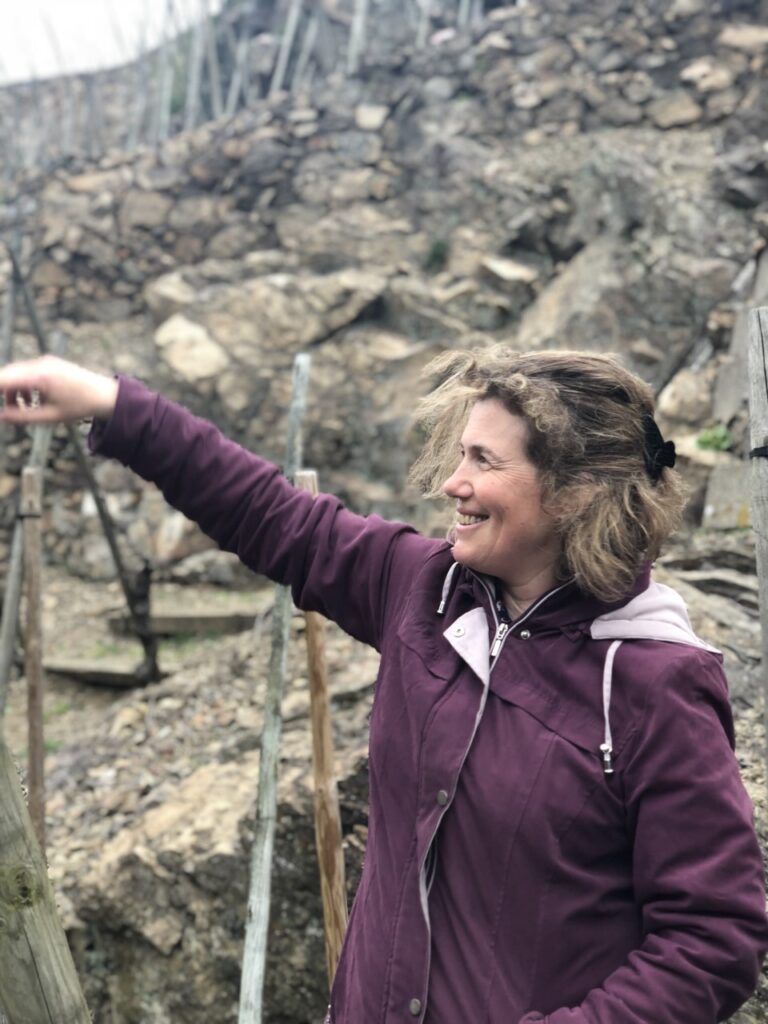
Domaine Levet in Côte-Rôtie has been a cornerstone of our portfolio since the 1983 vintage—the first they ever produced. Bernard and Nicole Levet started their domaine with three and a half hectares of enviable holdings around Ampuis, passed down through Nicole’s father Marius Chambeyron, a brazen vigneron who stuck a coarsely hand-painted “CHAMBEYRON” sign—still there to this day—high on his parcel of Côte-Brune to compete with those of his more famous and moneyed négociant neighbors. Today, their daughter Agnès is at the helm, and she continues to work their vertiginous, unforgiving terrain with bred-in-bone skill. Labor in this appellation is necessarily manual and unavoidably treacherous, with many terraces so narrow as to accommodate but a single row of vines, which plunge for water through scant topsoil and meters of pure schist. The wines today are produced in the same doggedly old-school manner as they always have: minimal de-stemming, natural fermentations, long macerations, élevage in mostly old foudres and tonneaux, and no filtration. Notably, all of Levet’s holdings are of the petite serine strain of Syrah—the ancient local strain of the region, whose smaller-berried, more aerated clusters produce wines of deeply savory fruit and intense spice. Perhaps in the ‘90s and early ‘00s, such unpolished wines were out of step with the times, not offering a gentle enough entryway into Côte-Rôtie’s innate wildness. Today, however, when even many a well-meaning risk-embracing wine displays a certain eagerness to please, Levet Côte-Rôtie stands as a beacon of elemental authenticity.
2019 was yet another dry, scorching-hot growing season, and Agnès ended up harvesting rather late—beginning the 20th of September—because the vines stopped maturing in August for a spell due to hydric stress. While the wines reflect the vintage in their formidable structure, the tannins are buffered by a great deal of fruit which manages to remain fresh and penetrating rather than overripe. Although the forward nature of the fruit might tempt one to open a 2019 on the early side, these are wines to stash deep in the cellar for maximum impact.
2020 Condrieu: After 36 years of producing nothing but Syrah, the Levet family premiered a small lot of Condrieu in the 2019 vintage, from a planting of 20-year-old Viognier in the vineyard La Maraze, in the commune of Saint-Michel-sur-Rhône. Vinified and aged half in steel and half in 600-liter demi-muids (two new barrels and one five-year-old barrel), this 2020 shows marked freshness for the appellation, with the oak playing a minor supporting role amidst the attractive quinine and apricot flavors.
2019 Côte-Rôtie: Comprised of vines from throughout the family’s holdings, Levet’s basic Côte-Rôtie spends two years in 600-liter barrels, less than 10% of which are new. The primary vineyard sources are Les Craies and Mollard in Côte Blonde, with younger vines from Moulin and Fontgent in Côte Brune. The 2019 displays a gorgeous nose of sandalwood and rich black fruits, with the spiciness of the petite serine on full display, and the tannins are all but buried beneath the opulent fruit. Although this cuvée is sometimes de-stemmed up to 50%, only 10% of the 2019 was de-stemmed due to the vegetative material’s ample maturity at the time of harvest.
2019 Côte-Rôtie “Les Journaries”: The Levets own a third of a hectare of 40-year-old vines in the fabled vineyard La Landonne, and this cuvée is built around that holding, augmented by small parcels of old vines in Côte Rozier and Côte Blonde. No de-stemming is done here, which allows for that intoxicating spice signature to reach even greater heights. Compared to the ferocious “La Chavaroche,” “Les Journaries” shows greater refinement and elegance, though in no sense is it tame. The 2019 offers a broad spectrum of spices on the nose, reminding one both of sandalwood and of fresh-ground curry, and the well-rendered tannins are suffused into a long, taut finish.
2019 Côte-Rôtie “La Chavaroche”: The crown jewel of the Levet family’s holdings is a 1.2-hectare parcel of old vines at the very summit of the great La Chavaroche vineyard, and the wine they summon from this dizzying slope is among the most iconic in our portfolio. Always arrestingly wild, “La Chavaroche” possesses an unmistakable musk: a warm-animal profile that feels somehow ancient and unknowable—like some profound riddle of terroir. This 2019 displays a savory, elemental nose of intense mineral power, and its palate offers jet-black fruits atop firmer and less-buffered tannins than the “Les Journaries.”
Xavier Gérard
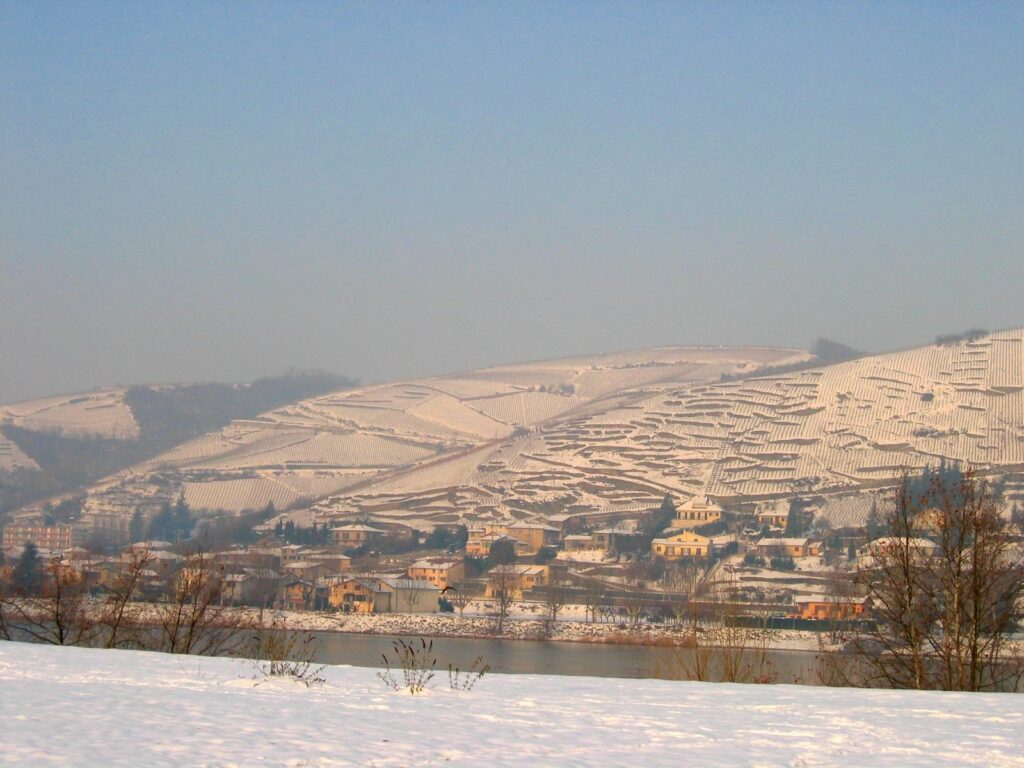
Xavier Gérard is a rapidly up-and-coming force to be reckoned with in the Northern Rhône. Having assumed control of his family’s impressive holdings in Côte-Rôtie and Condrieu with the 2013 vintage, Xavier has been steadily honing his craft over the ensuing years; today, his svelte, pure, classicist renderings of Côte-Rôtie’s unique terroir rival anything produced in the appellation. Furthermore, his nimble, acidity-prizing touch with Viognier yields Condrieu of appealing restraint and foregrounded minerality. Xavier is steering his viticulture toward the fully organic—a particularly arduous feat on these steep terraced slopes—aiming for certification over the next several years, and he has refined his touch in the cellar to allow for sensitive rather than systematic whole-cluster usage, natural fermentations, and minimal handling of the wines during their élevage. His emphasis on elegance and precision provides a wonderful counterpoint to the beloved Côte-Rôtie of the Levet family (who introduced us to Xavier ten years ago), while offering an equally profound glimpse into these slopes’ prized schist.
2019 Viognier IGP Collines Rhodaniennes: Sourced from a partly terraced one-hectare parcel in the commune of Vérin, just two kilometers from Condrieu proper, Xavier’s Viognier is a well-balanced wine that illustrates his skilled lightness of touch with this notoriously finicky variety. Aged in large, neutral foudre for ten months, it emphasizes varietal purity over élevage, and finishes with an impression of clean, vibrant acidity. As with his Condrieu, he harvests this vineyard in two passes—one on the early side for acidity, and a second around ten days later for fruit and texture.
2019 Condrieu “L’Arbuel”: Gérard’s precise, mineral-driven “L’Arbuel” combines tiny holdings in two vineyards: a 0.18-hectare sliver in high-altitude Corbery, a cool, west-facing site with soils of granite and muscovite; and a 0.32 parcel in Marmouzin, slightly downslope, planted also in granite and muscovite. In order to achieve maximum equilibrium in his Condrieu, Xavier harvests his Viognier in two passes about ten days apart; the first pass gives acidity, and the second gives fruit. He also employs a portion of the wine from the final pressing, which contributes midpalate richness and a touch of structure-providing bitterness. Aged for 18 months primarily in older barrels with a portion in steel, the resulting wine is nimble and fresh, balancing its Viognier-typical notes of peaches and cream with a sense of nervy poise.
2019 Condrieu “Côte Chatillon”: Xavier owns a sizable holding in this mid-slope vineyard, whose dark-colored migmatite-rich soils yield a Condrieu of impressive weight and mineral-driven thrust. Aged entirely in used barrels of 225-liter and 500-liter capacity for 18 months, “Côte Chatillon” offers a richness comparable to that of the “L’Arbuel,” yet with a drier overall feel and a more elemental mineral underpinning. This is a profound Condrieu that backgrounds varietal character in favor of terroir, even at this youthful stage during which Viognier’s primary notes often tend to dominate a wine.
2020 Gamay “Les Autrichiens”: Xavier recently began farming a parcel of massale-selection Gamay in Givors (in the Auvergne) planted in 1980 by his grandfather Pierre, and he produces a mere 2,000 bottles per vintage from this 0.35-hectare plot. Situated at 350 meters altitude, these pudding-stone-littered soils of reddish-brown clay (similar to those found in Crozes-Hermitage) render a wine of notable concentration and structure—a definitively Rhône version of the variety. Xavier employs one-third whole clusters in the vinification here, aging the wine in neutral 600-liter barrels of at least ten years of age and bottling it just prior to the following harvest. The name “Les Autrichiens” (“the Austrians”) is a historical reference: the hill upon which the vines are planted—part of Xavier’s grandfather’s farm—is also a burial site for a few Austrian soldiers who perished there during the Franco-Prussian War of 1870-1871.
2019 Côte-Rôtie: The Gérard family owns 3.2 hectares worth of old vines in Côte-Rôtie, spread among four notable vineyards: Mollard (comprising two-thirds of their holdings), Viallière (planted in 1922), La Brosse,and the fabled La Landonne. Tailoring his de-stemming regimen to each harvest’s particular character yet never wanting the stems to dominate the wine, Xavier included 40% whole clusters in the vinification of the 2019, and the wine spent two years in used 600-liter demi-muids after a natural fermentation in concrete. This type of traditional, unfussy élevage is a tried-and-true method of harnessing maximum expression from the Syrah of Côte-Rôtie, yet it too often gets tinkered with; thankfully, Xavier sees no benefit to such attempts at sculpture, and his 2019 offers tremendous purity alongside ample ripeness and sappy, cassis-like fruit. The final blend includes 4% Viognier, primarily from vines planted in Mollard.
2019 Côte-Rôtie “Le Mollard”: For the first time, Xavier produced in 2019 a single-vineyard Côte-Rôtie from Le Mollard—the site in which the majority of the domaine’s holdings in the appellation are planted. This cuvée is both a vineyard and a barrel selection: Xavier employed a half-hectare 1981 planting of Syrah (with 6% interplanted Viognier), and then chose the five best barrels to bottle separately as Côte-Rôtie “Le Mollard.” Two of the five barrels were new (but seasoned first with a Viognier fermentation to reduce the oak’s impact), and the other three were four- and five-years-old. Vinified with 50% whole clusters, this presents an expansive, meditative nose of warm stones, elegant spice, and refined, precise fruit—a fully formed and utterly gorgeous aromatic profile even at this youthful stage. Though larger-scaled than those of the basic Côte-Rôtie, the tannins here are astonishingly precise—pointillistic in feel rather than monolithic—and integrated beautifully into the wine’s mouthfilling, energetic palate.
2019 Côte-Rôtie “La Landonne”: Since 2013, Xavier has bottled miniscule quantities of wine from the legendary “La Landonne” vineyard, where he owns a tiny parcel planted by his father in 1981. Vinified with 75% whole clusters and aged for 18 months in 50% new oak (one new barrel out of the two produced), this 2019 is both kaleidoscopic and precise, with an outrageously spice-drenched nose suffused with dark-purple and black fruits. Amidst all this riotousness, however, the wine possesses an inner sense of calm, with sexily clenching tannins and just-so fruit; Xavier’s preternatural touch with extraction is on full display.
Guillaume Gilles
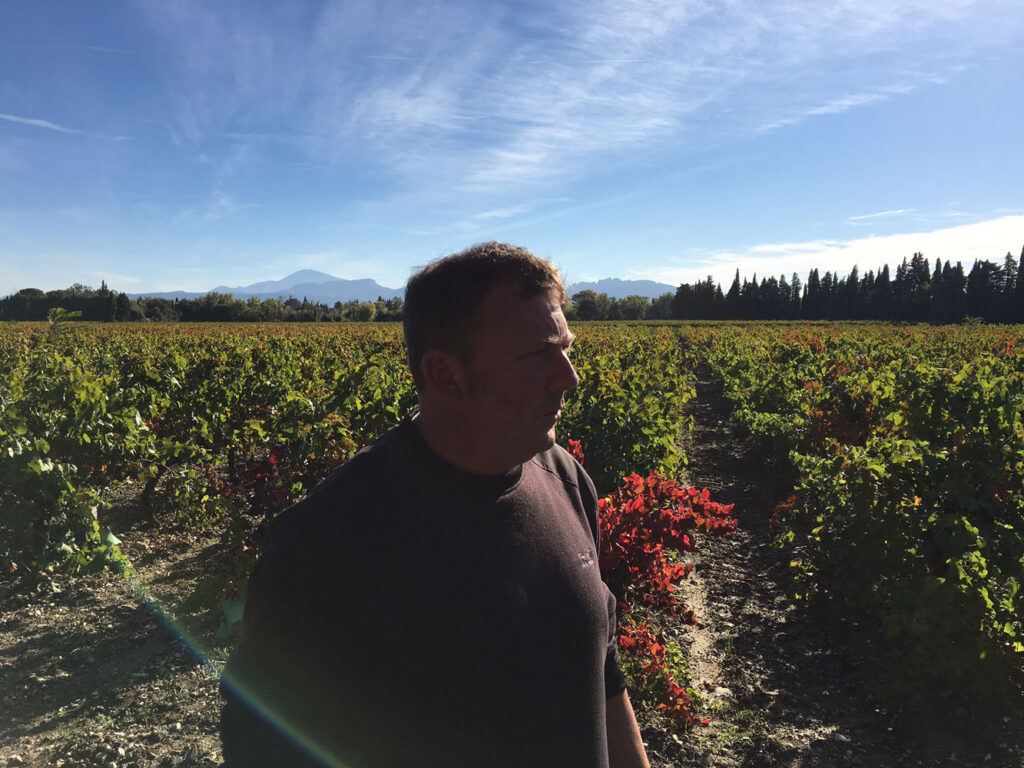
Guillaume Gilles is a bona fide superstar of Cornas. A local native, Guillaume learned the ropes through stages with Jean-Louis Chave and Robert Michel between 2000 and 2004, and in fact he makes his wines in Michel’s old underground cellar in the heart of the village. Furthermore, his flagship Cornas is produced primarily from vineyards in Chaillot which were the source of Michel’s “Cuvée des Coteaux” back when he was active. A brilliant farmer, Guillaume eschews chemicals in the vineyards, working his three hectares completely by hand. He vinifies in concrete, uses only naturally occurring yeasts, and employs only whole clusters in his vinifications—a vital factor in his wines’ intoxicating aromatics and a resounding statement of his old-school sensibilities. He ages his wines in very old 600-liter demi-muids, racking minimally and employing no more than 60 milligrams of total sulfur, and bottling without fining or filtration. Guillaume’s wines are expressive, deep, powerful, and spicy, humming with terroir and easily rivaling the greatest creations of the appellation’s old masters.
Never one for hyperbole, Guillaume said point-blank that 2019 was the best vintage he’s yet made. He began harvesting on the 10th of September after a dry and solar growing season, and he remarked that the juice from his clean, healthy fruit was the highest quality he’d ever witnessed. Guillaume thought at first that such gorgeous juice would yield generous and fruity wine, but his 2019s immediately after fermentation were, in his words, “granite blocks.” Yes, they will need ample cellar time, but these layered, elemental wines will thrill old-school Cornas lovers to their very core.
2020 “Les Peyrouses” Blanc (Vin de France): From the vineyard of Les Peyrouses, a site just east of Cornas in which Gilles also owns 150-year-old Syrah, this cuvée comprises 80% Marsanne and 20% Roussanne, from a third of a hectare’s worth of vines planted between 2009 and 2013. Its soils of sand, clay, and large pudding-stones render a white wine of formidable amplitude but excellent focus, given shape by a touch of appealing bitterness on the finish. This 2020 underwent an eight-month élevage in a combination of 400-liter barrels (10% new) and steel, with malolactic fermentation finishing completely.
2020 Saint-Péray: From a young 2015 planting near Les Rieux situated at 350 meters of altitude on a steep granitic slope, this combination of two-thirds Marsanne and one-third Roussanne fermented in steel and spent six months in wood: two new 600-liter barrels, which Guillaume will allow to age rather than replace every year. The southeast exposition here, which shades the vines in the late afternoon, helps preserve freshness, and indeed the wine offers a nice sense of equilibrium even as it approaches 14% alcohol, with notes of honey and almond nougat framing a thick blast of apricot.
2020 “Combeaux Massardières” Gamay de la Vallée du Doux (Vin de France): A few years ago, Guillaume acquired 0.3 hectares of 50-year-old Gamay in the Ardèche planted in pure high-acid granite at 500 meters altitude, and he produces a mere 800 bottles per vintage on average—although he will soon augment that with 0.4 hectares of more recently planted vines. Guillaume’s Gamay here is a local Auvergne strain known as Gamay Saint-Romain—a variation which yields a spicier and more structured wine than the Gamay of the Beaujolais. As with his Cornas, he refrains from de-stemming, but he allows fermentation to proceed semi-carbonically here, aging the wine in used 300-liter barrels for eight months. The finished wine is well-structured and bare-knuckled in its minerality, offering a certain intensity that speaks perhaps more of Cornas than Gamay, yet still possessing an underlying sense of lift and freshness.
2019 Cornas “Les Rieux”: Les Rieux is situated up above the main amphitheater of Cornas at 400-450 meters altitude. Guillaume acquired acreage here in 2010, immediately planting vines on its soils of white granite. Whereas before the turn of the century there was really nothing planted above 300 meters in Cornas, today’s warmer climate allows for wines from plots like this one to reach full maturity at modest levels of alcohol. Robert Michel, upon tasting the first vintage of this wine, remarked that it reminded him of the Cornas he and his village-mates made in the ‘70s and ’80s. Certainly, the bright, spice-saturated red character of the fruit here provides a fascinating contrast to Gilles’ more brooding flagship Cornas.
2019 Cornas: Gilles’s flagship Cornas comprises three separate parcels, all within the renowned vineyard of Chaillot, planted between the early-1950s and the mid-1970s: lower-lying Combe de Chaillot, with its sandier soils, offers more straightforward fruit; steep Les Terrasses, high up on the slope and poor of topsoil, contributes granitic punch and intense spiciness; and the also-terraced Grandes Mures, with its sun-soaking southward exposition, provides dark-fruited bass notes and enhances the final blend’s overall structure. Guillaume vinifies and ages each parcel separately, blending them after an 18-month élevage in a blend of 400-liter and 600-liter oak casks of between five and 15 years of age. The brooding, midnight-black 2019 offers a visceral nose of bloody fruit and peppercorns, with a tannin-saturated palate of immense proportions. The fruit is completely backgrounded at this early stage of development, and this will undoubtedly develop positively in bottle for multiple decades.
2019 “Les Peyrouses” Côtes-du-Rhône Rouge: Hailing from the flats just to the east of the Cornas appellation, “Les Peyrouses” Rouge is a remarkable and unique wine: pure Syrah planted in the 1870s, during phylloxera’s initial outbreak, and in fact comprising the very first grafted vines in the area. The soil in this vineyard is a mix of sand and clay, with loads of large limestone pudding-stones, and the wine Guillaume coaxes from these astonishingly old vines is so powerful in its fruit that he gives it 12 months élevage instead of 18. (Also, as a testament to its sheer power, he always presents it after his Cornas during visits to his cellar.) The deep, structured, and beautifully sappy 2019 “Les Peyrouses” offers a similarly black-fruited profile to the 2019 Cornas, with soaring spice carried along on a wave of gentle and authenticity-enhancing volatility.
Domaine Lionnet
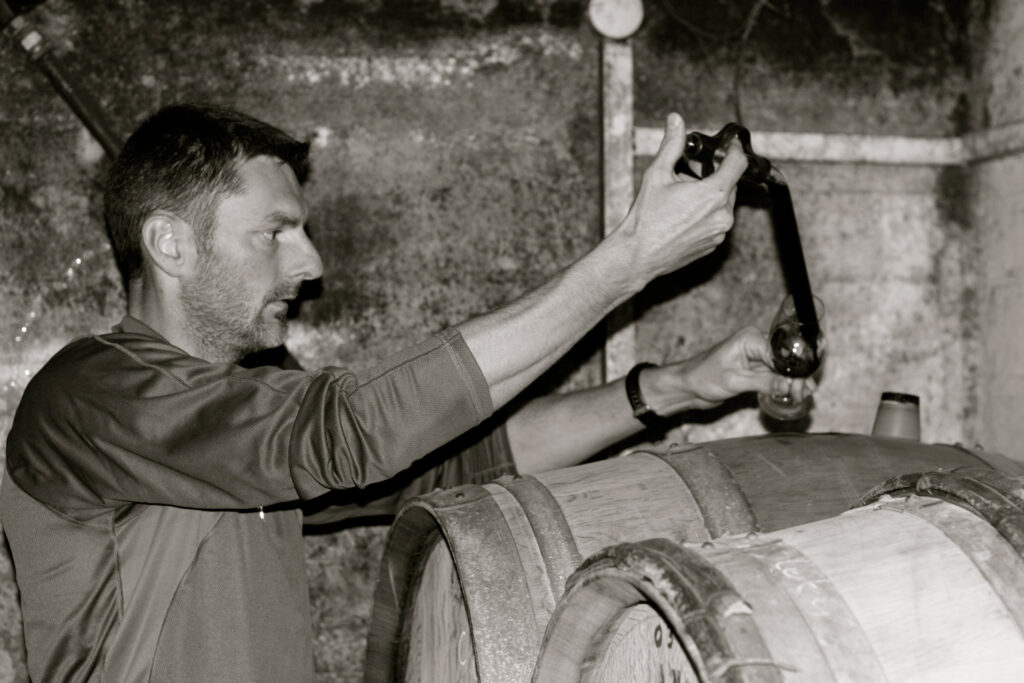
The Lionnet family has been farming in Cornas since 1575, and the five-hectare domaine today comprises an impressive array of very old vines in some of the area’s greatest sites. In 2003, Corinne Lionnet and her husband Ludovic Izerable—originally from Grenoble—assumed control of the family holdings, and we have witnessed with great delight a steady and remarkable improvement over the ensuing vintages. They obtained organic certification with the 2012 vintage, and, like Guillaume Gilles, they have recently acquired new holdings in Cornas’ higher-altitude reaches, pointing a way forward both for the domaine and the appellation itself. Ludovic and Corinne are great friends with Guillaume, and the constant dialogue among them about their craft benefits everyone involved. Although Lionnet’s practices are quite close to that of Gilles—natural fermentations, no de-stemming, neutral 600-liter barrels for ageing—the wines are more chiseled, leaner and slightly sterner in their youth, yet equally profound in personality and revelatory with proper bottle age.
2020 Saint-Joseph Blanc “Pierre Blanche”: Pure Roussanne aged partly in terracotta jar and partly in a single three-year-old 228-liter barrel, this new micro-cuvée—from vines planted in 2014—offers intense minerality beneath its overlay of exotic almond-inflected apricot fruit, with a lip-smackingly pulpy texture and a vivid overall sense of purity. One feels the influence of the Châteaubourg vineyard’s limestone soils in the wine’s directness of line and mineral elegance.
2020 Saint-Joseph Rouge “Terre Neuve”: Ten years ago, Ludovic and Corinne acquired a 0.4-hectare parcel in Châteaubourg, the southernmost village in the Saint-Joseph appellation (and thus the nearest to Cornas). They planted Syrah in its soils of clay and large-stoned limestone (a less commonly encountered soil type in Saint-Joseph), and in 2019 they wrested a mere three 500-liter barrels from these relatively young vines. Bottled after one year of élevage, the 2020 “Terre Neuve” is dark-fruited, serious in personality, and amply tannic–more of a piece with its Cornas brethren than the past few vintages have been.
2019 Cornas “Pur Granit”: Ludovic and Corinne’s “Pur Granit” is produced from a southeast-facing one-hectare parcel of massale-selectionSyrah, planted between 2008 and 2011, in the vineyard of Saint-Pierre at around 380 meters altitude. The combination of high altitude and pure-granite soil (hence the name) yields a taut, racy Cornas of remarkable mineral articulation; somewhat in the vein of Guillaume Gilles’ “Les Rieux,” it offers a more easygoing counterpart to the “Terre Brûlée,” built more around highwire tension than roaring power.
2019 Cornas “Terre Brûlée”: Ludovic and Corinne farm very old vines (between 40 to 100 years of age) in several notable Cornas vineyards, which are all blended into their flagship cuvée “Terre Brûlée”: Mazards, with granite-inflected soils of clay-limestone, is dark and powerful; Chaillot contributes classic granitic heft and dusty spice; clay-limestone Pied de la Vigne, which flanks Chaillot’s eastern edge, provides structural rigor; and Combe, the southernmost lieu-dit in the appellation, comprises sandy granite soils which give rounder fruit and more overtly floral aromas. Aged entirely in used 600-liter demi-muids, “Terre Brulée” is elemental and stern in its youth (in keeping with the house style), yet it will unfurl over the years to reveal a wine of great lift and energy.
Related
